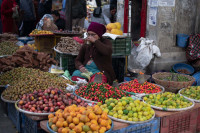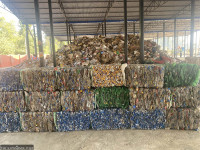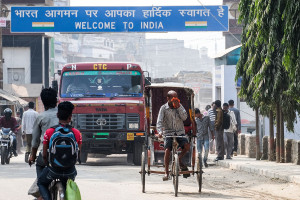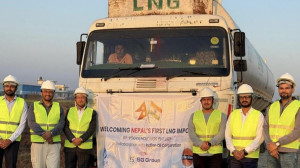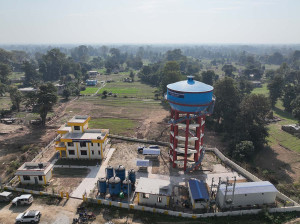Money
At Korala border, trade thrives on China side, but Nepal lags behind
The immigration office opened for a few days, but has since been abandoned. Traders are forced to operate from tents and open air, with no shelter or storage.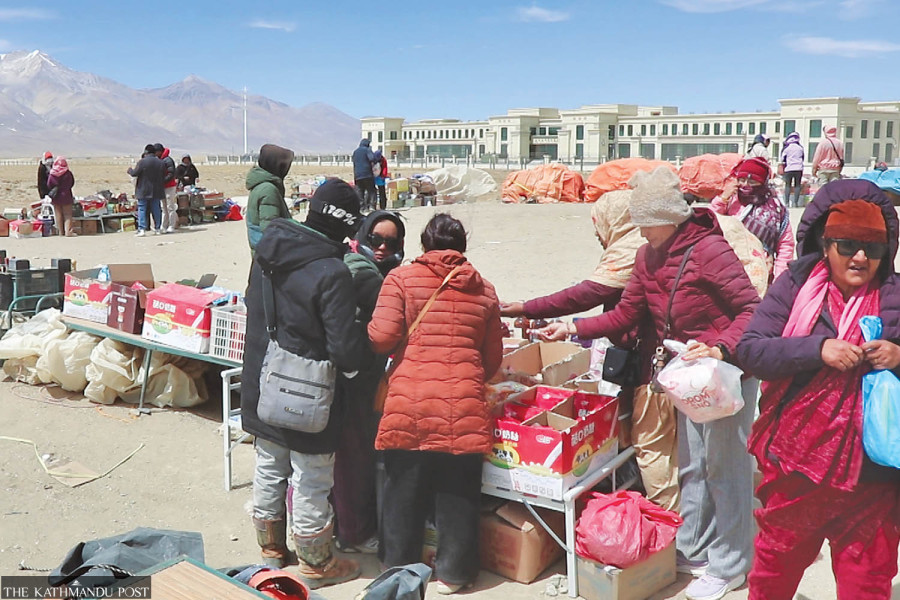
Madhav Aryal
In the cold weather, with gusty winds at an altitude of 4,600 metres, the Korala border, located at the Nepal-China border, sits stark and exposed. Pillar No 24, marked ‘Nepal’ and erected in 1972, still stands tall.
About 150 metres to the south, Nepal has built a modest one-storey, four-room tin-roof building. The immigration office at the Korala border opened in late October last year, but it closed within a few days and hasn’t reopened as of today.
“The provincial government built a four-room building and inaugurated the immigration office,” said Pasang Wangdi Gurung, a trader from Mustang, “It was open for maybe three or four days, but after that, no one came. The padlock is still hanging on the door.”
According to Gurung, on the Chinese side of the Korala border, large buildings have already been built. Nepalis are allowed to conduct trade between 9am and 2pm.
China has provided full facilities on its side. In contrast, on the Nepal side, traders are forced to operate from pushcarts and tents, Gurung added. Due to the windy conditions and lack of infrastructure on the Nepal side, there isn’t much crowd. “People can’t stay for even an hour here,” he said. “There’s not even a place to take shelter if it rains. So everyone is in a hurry to leave.”
Some traders have pitched tents, while others are forced to cover their entire faces due to the wind while trading under the open sky. Despite these difficulties, goods brought from China are still being sold.
There are no storage facilities for goods from China, nor even a designated area to keep them. Traders have to travel 13 kilometres to Nechung for customs clearance, said Karchung Bishta, a businesswoman from Lo Manthang.
“It’s called a border, but look how much development China has already done,” she said. “There’s absolutely nothing on the Nepal side. Even customs clearance is far away. The government doesn’t seem to care.”
There is no regular presence of customs or security personnel at the border. One police officer occasionally comes and goes on a motorcycle. There is no building, drinking water, communication, or toilet, she explained.
Everyone who trades or visits the border faces difficulties. Locals from Lo-Ghekar, Damodar Kunda, and Lo Manthang Rural Municipality are given entry passes, allowing them to go to the Chinese side for trade, but they must return by 2pm. They buy goods in China and sell them upon return.
According to traders, after the opening of the Korala border, trade, movement, and business between Mustang and China began. Items such as clothing, electronics, beverages, and daily necessities are imported into Nepal, while products like sheep wool, pashmina, and jimbu (Himalayan garlic) are exported to China. Even sheep and mountain goats are bought and sold through the Korala border.
Customs, quarantine, immigration, and security arrangements are located 13 kilometers away at Nechung in Mustang. However, there’s been no permanent arrangement at the border itself, said Karma Gurung, a trader from Lo Manthang.
According to him, if the government built and managed infrastructure on the Nepal side, trade between Chinese and Nepali goods would be much easier. On the Chinese side, there’s already a gated, fenced border and large buildings, along with infrastructure for customs and other needs.
“Everything is happening on the Chinese side, but nothing on ours,” he said. “They say the border is open, but it’s not practical for trade. How can we work without infrastructure?”
The integrated customs office building across Pillar No 24 on the Chinese side has been there for years. China has already developed customs offices, roads, electricity, and water. Nepal, on the other hand, built a small four-room structure, which remains closed.
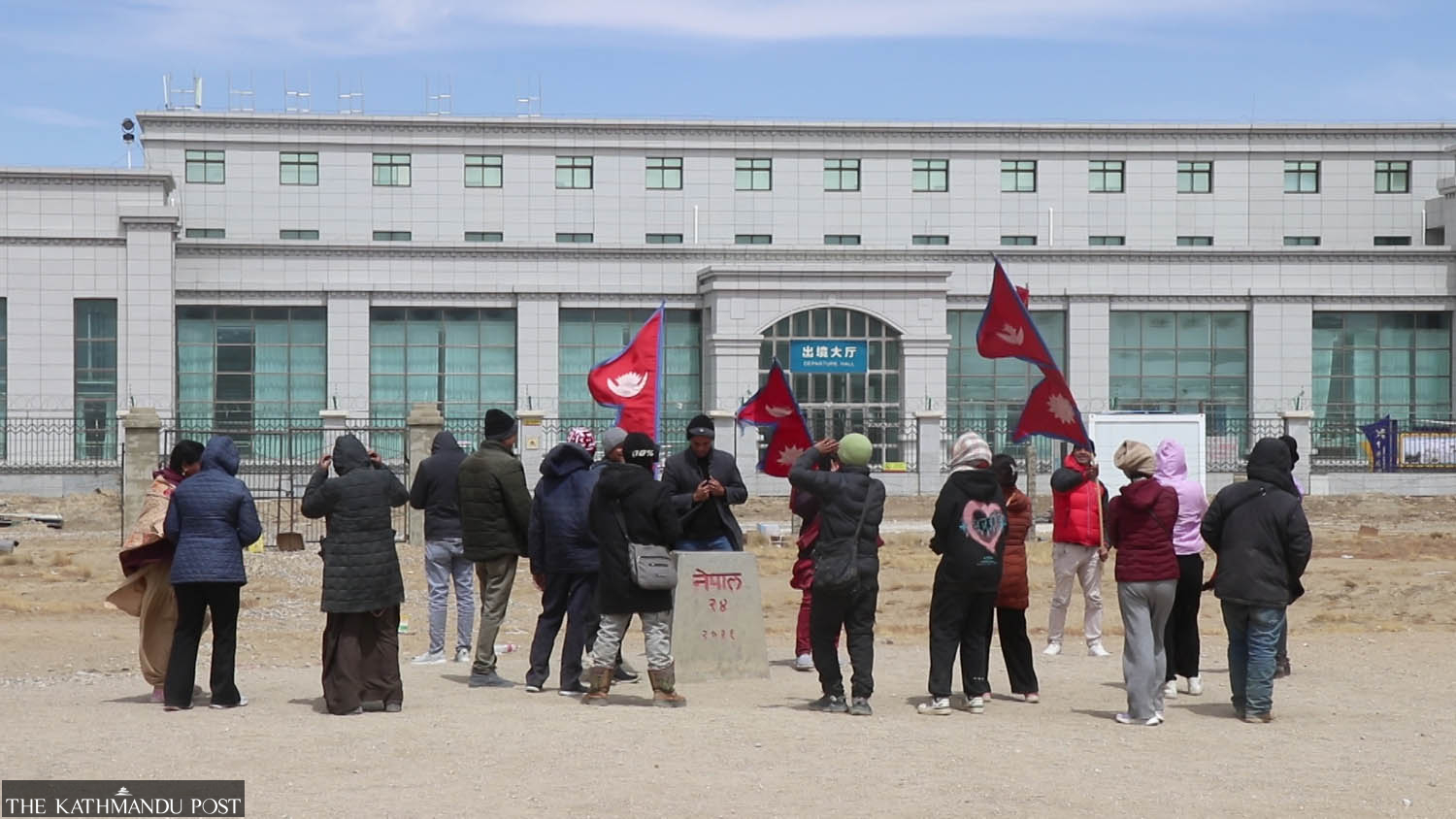
The process to allocate 1,000 ropani (50.87 hectares) of land for opening an integrated customs office at Korala started four years ago. Demarcation and paperwork have already been completed.
The Nepal Police, stationed 13 kilometers away, oversees the Korala border. However, there is no infrastructure to monitor the area properly—no manpower, no resources. “They check while coming and going,” said Karma. “Sometimes one or two police officers show up, but they leave quickly because of the wind.”
Tourists visiting the Korala border are also at risk. In case of altitude sickness, they have to be taken 13 kilometers away to the Armed Police Force camp in Nechung for oxygen.
The current four-room building was meant for emergency rescue and security, not for commercial use. It’s not serving trade purposes. The government has failed to build necessary infrastructure to develop Korala commercially, said Pema Gurung, Chairperson of ward 1 of Lo Manthang Rural Municipality in Mustang.
The rural municipality and ward have taken different initiatives for infrastructure development, but they’ve faced difficulties executing them due to delays in approval by provincial and federal governments.
“Even though we pushed for it, we have yet to get the approval of the province and federal levels,” said Pema. “We’ve raised this issue many times with lawmakers and ministers from the federal government, but nothing has been done—no water supply, electricity, or toilets.”
According to him, 1,344 ropani of land has already been allocated for infrastructure development. The rural municipality managed the land years ago, but development work hasn’t moved forward.
“With road upgrades, hundreds of tourists visit the Korala border daily,” he said, “But due to lack of facilities, they can’t stay even for an hour and are forced to return fast.”
A rough, two-lane road has now reached the Korala border, which lies 112 kilometers north of Jomsom in Mustang.




 8.12°C Kathmandu
8.12°C Kathmandu
